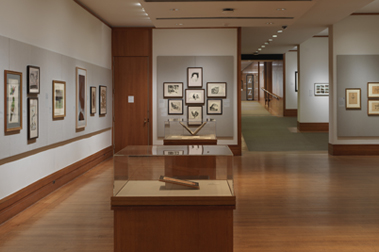Sketch at the Back of a Zinc Plate
Sir Francis Seymour Haden British
Not on view
Seymour Haden was the unlikely combination of a surgeon and an etcher. Although he pursued a very successful medical career, he is mostly remembered for his etched work as well as for his writings on etching. He was one of a group of artists, including James McNeill Whistler (1834–1903) and Alphonse Legros (1837–1911), whose passionate interest in the medium led to the so-called etching revival, a period that lasted well into the twentieth century. The extolling of etching for its inherent spontaneous qualities reached its pinnacle during this time. While the line of the etching needle, Haden wrote, was "free, expressive, full of vivacity," that of the burin was "cold, constrained, uninteresting," and "without identity."
View of two pools of water at Sonning, larger in foreground, smaller in background, divided by strip of land; man with rod at left, town in background at right.
"Probably done at Sonning, Berkshire.
State III (H1). Reflections added in both pools with drypoint and there is drypoint work on the figure on the right. The ground before the houses is shaded with horizontal strokes. Some burnishing of foul-biting above tree and in foreground."
[Source: Schneiderman, p. 299]
"Published State: First.-The reflections in the pool, and the shading on the ground in front of the houses, respectively added."
[Source: Harrington, p. 91]
